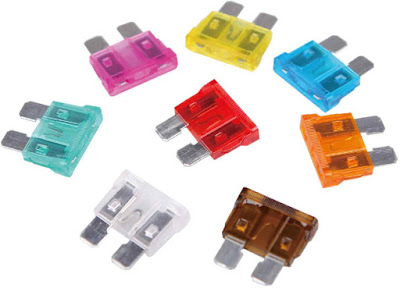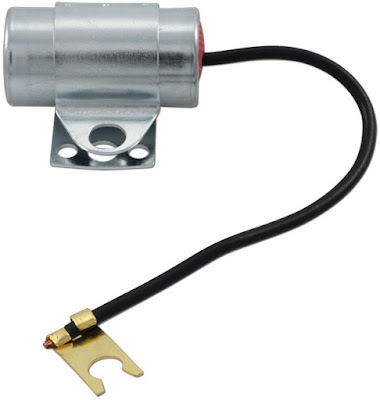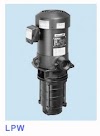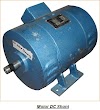Conventional Ignition System Components and Their Functions - The ignition system is one of the systems used in cars that functions to generate electric sparks into the combustion chamber using spark plugs. The ignition system is the main system that must be present in an internal combustion engine so that the engine can perform its function.
In internal combustion engines, especially the "Spark ignition engine", to carry out the combustion process, 3 main conditions are required that must be present. What are these conditions? Simply put, if we relate to the chemical concept of a combustion reaction, these conditions are the building blocks of the fire triangle, namely air, fuel, and a source of heat/activation energy (in vehicles this activation function is executed by a component called a spark plug). If one of the three conditions above is not met, the combustion process will not occur and the vehicle will not be able to start.
That's the logical reason why when the gas runs out, the car will stop working. This is because one of the three components that play a role in the combustion reaction is not available. In vehicles, it turns out that these three conditions are still not sufficient to carry out combustion efficiently to produce maximum power. In vehicles, there are more advanced requirements regarding combustion to get more maksimal combustion results (in this case combustion will produce more power) what are those?
To be able to work properly, vehicles need good sparks, homogeneous fuel and air composition and good compression. If the spark generated by the spark plug is small or weak due to a perkara with the ignition system circuit/component, the vehicle may still work but you may feel a high enough power loss. Therefore, it is necessary to check the ignition system to keep the sparks produced by the spark plug always in good condition to carry out the combustion process.
Conventional Ignition System Components and Their Functions
1. Battery
The battery in the ignition system functions as a low voltage (12V) electric current source (DC) which is then supplied to the ignition coil.
2. Fuse
Fuse serves as a safety in the circuit, which prevents damage to components when there is excessive current.
The mechanism is, when there is excess current flowing in the circuit, the fuse will become very hot, causing the fuse to burn and break. In this condition, when the fuse breaks, the electric current flowing in the circuit will stop because it no longer meets mass.
3. Ignition Key
The ignition key serves to connect and disconnect the electric current from the battery to the ignition system circuit. You need to know that the ignition system circuit on both motorcycles and cars will work when the ignition is ON.
4. Ignition Coil
The ignition coil is a component that functions to increase the low voltage (12V) from the battery into high voltage electricity to produce a spark that is strong enough on the spark plug to carry out the combustion process. Where the value of the induced voltage generated by the ignition coil on the high voltage cable can reach 20,000 Volts
5. Breaker Point
Breaker Point is a component of the ignition system that functions to disconnect the electric current flowing in the primary coil so that electrical induction occurs in the secondary coil of the ignition coil. Breaker Point is part of the distributor, where this Breaker Point can open and close because it is moved by a camlobe which has a rotary motion. Camlobe can rotate because it continues the rotation of the engine. Camlobe has a number of cams according to the number of cylinders.
6. Condenser
The condenser serves to prevent the occurrence of electric sparks at the breaker point. This component is usually attached to the distributor. If there is damage to the condenser it will cause the beaker point to be damaged quickly.
7. Rotor
The rotor is inside the distributor. The rotor rotates with the camlobe where the function of the rotor along with the agen cap is to divide the high-voltage electric current generated from the induction process in the secondary coil to be flowed to each spark plug according to the firing order.
8. Distributor Cap
The function of the agen cap together with the rotor divides the high voltage current to each spark plug through the spark plug wire and then to the spark plug according to the ignition sequence.
9. High Voltage Cable
High Voltage Cable serves to drain high voltage electric current from the ignition coil to the spark plug. This high-voltage cable must be able to carry high-voltage electric current without leakage.
10. Spark Plug Cable
Spark plug cable is actually the same as a high-voltage cable, which is to transmit high-voltage electricity to the spark plug. However, usually the length of this spark plug cable adjusts to the distance from the agen to the spark plug. The number of spark plug wires corresponds to the number of cylinders.
11. Spark Plug
Spark plug is a component in the ignition system that functions to issue a high voltage electric current from the induction in the ignition coil into an electric spark for use in the combustion process.
12. Governour Advancer
The Governor Advancer is one of the components of the ignition system in the agen which functions to advance the ignition timing according to the increase in engine speed.
Governour advancer works by utilizing the rotational speed of an object which then has a centrifugal force due to the rotational speed and mass of the object. This object is hereinafter referred to as the "Governor Weight". This centrifugal force is used to change the position of the cam and driven plate which opens the contact point (platinum) earlier than the earlier rotation time.
13. Vacuum Advancer
Vacuum advancer is a component in the agen that serves to reverse the ignition timing.
Those are the components of the conventional ignition system and their functions that can be explained on this occasion. Thank you for reading this article to the end.
Sumber http://keluargasepuh86.blogspot.com


















